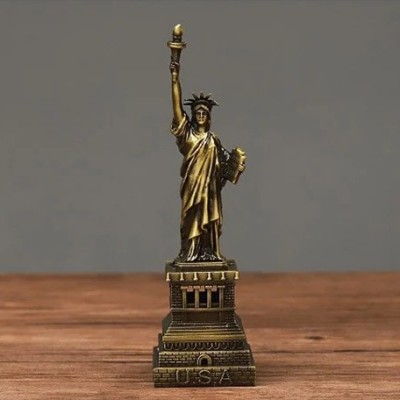
reactormag.com
Five Artificially Layered Planets and World Cities
Books
reading recommendations
Five Artificially Layered Planets and World Cities
Need More Surface Area? Why Not Build More?
By James Davis Nicoll
|
Published on September 16, 2025
Comment
0
Share New
Share
Over the last century, car ownership per capita (worldwide) has soared. Indeed, in some nations, such as the United States, there are almost as many cars as people. Unbiased neutral observers such as the United Autoworkers, Ford Motors, and the International Asphalt Conglomerate1 agree that this has generally been a welcome development. It follows logically that governments should do everything in their power to facilitate continued unchecked growth in car ownership.
Wreckers, cynics, and other riffraff may ask “As there is only a finite surface area on Earth, where would we park a hundred trillion cars?” Happily, there is an obvious answer.
Build more Earth.
Humans do this every time we construct a multistory building. A ten-story parking garage with a one-hectare footprint has effectively created nine new hectares. Why not do this for the whole of the planet?
Perhaps some examples are in order. Let’s tackle them in ascending order of scale.
Trantor — Foundation by Isaac Asimov
All 75,000,000 square miles of Trantor’s landmasses are covered in a continuous cityscape. The city reaches a mile under the surface and well above it as well. At ten feet per level, it follows that Trantor probably provides its inhabitants with the equivalent of five or six hundred planets worth of surface area.
Oddly, Trantor does not have five or six hundred planets worth of people. It has something over forty billion people. The effective population density is something like one person per square mile, which is something more than Greenland’s population density, but significantly less than Mongolia’s. What does Trantor do with all those miles and miles of empty corridor2? Fill them with row after row of filing cabinets, each one filled with Hollerith cards?
Helior — Bill, The Galactic Hero by Harry Harrison
Whereas Trantor ruled the galaxy, Helior rules only 11,000 worlds. However, Helior has been more diligent about Trantorforming their world, covering the entire planet—land and ocean—in a vast, resplendent city. From space, the home of 150 billion people gleams like gold, or at least like anodized aluminum.
For some reason—possibly because Bill, The Galactic Hero is a comedy devoted to taking the piss out of classic SF—the novel invests more attention to the practicalities of keeping 150 billion people alive on a planet no longer suited to sustaining life.
It would be a sad essay if I didn’t learn something new. What I learned today is that there is a Bill, The Galactic Hero film.
Sursamen — Matter by Iain M. Banks
Sursamen is one of thousands of so-called “shellworlds” constructed by the alien Involucra. Precisely why the Involucra thought this was a good idea is unclear, as the aliens are long extinct. The Iln later invested almost as much effort destroying the shellworlds. Why the Iln did this is also unknown, for they too are long extinct.
Nevertheless, twelve hundred Veil shellworlds survived into the modern era. Each one has enough volume to support hundreds of unrelated civilizations, Sursamen certainly does. One could invest a lifetime exploring the interior… although as several characters discover, depending on just what long-forgotten secret one uncovers, that lifetime might be quite short.
Moshi, Katazyrna, and Bhavaja — The Stars Are Legion by Kameron Hurley
Moshi, Katazyrna, and Bhavaja are but three of a vast number of artificial worlds orbiting their star. Each is the size of a planet. Each world relies on extraordinarily user-unfriendly biotechnology. Each is as subject to entropy as any living thing. Each world is doomed.
Readers may wonder if the human occupants of the worldships, no doubt aware of the great crisis bearing down on them, unite to find the means by which all may be saved. I regret to report that they do not. The phrase “crabs in a bucket” comes to mind.
Object Lambda — Farthest Star by Frederik Pohl and Jack Williamson
Object Lambda (also known as “Cuckoo”) is a study in contradictions. Although Object Lamba is more massive than Earth’s sun, its density is miniscule because the great sphere is more than 300,000,000 kilometers wide. Nevertheless, Cuckoo has a solid surface, a breathable atmosphere, and thriving ecosystems.
All this is possible because Object Lamba is to Hurley’s fleet of worldships as the fleet is to Trantor or Helior. Object Lamba is a Dyson Shell, a single vast, layered artifact at the heart of which is a star. The surface ecologies are a very tiny fraction of the ecosystems supported by Object Lamba. But it’s more than just a habitat; it is an intergalactic starship whose purpose in traversing the Milky Way is unknown.
These worlds are, of course, only a very small sample of the imagined layered worlds created by SFF3 authors. Perhaps I missed your favourites. Feel free to mention them in comments.[end-mark]
Motto: A Completely Paved Earth by 2030! ︎Presumably there are strategically placed vending machines to sustain Trantorians as they search for other people. ︎I say “SFF” here rather than just SF because Walter Jon Williams’ Metropolitan features a world city and is fantasy. ︎The post Five Artificially Layered Planets and World Cities appeared first on Reactor.










